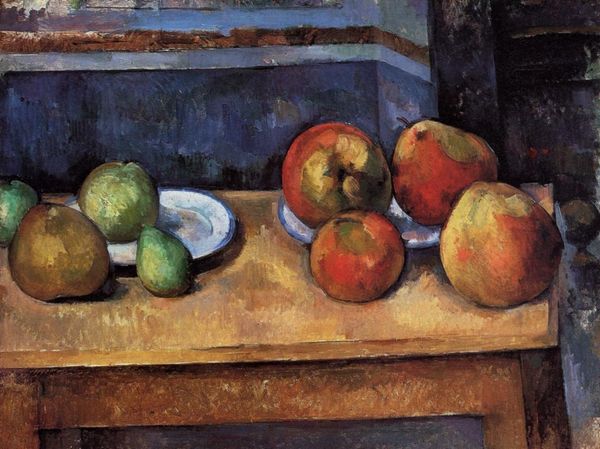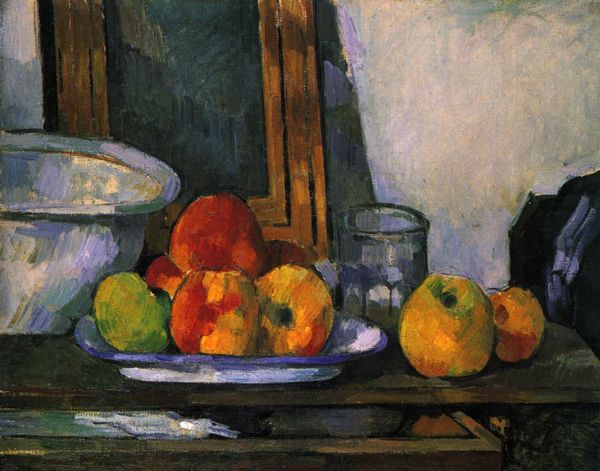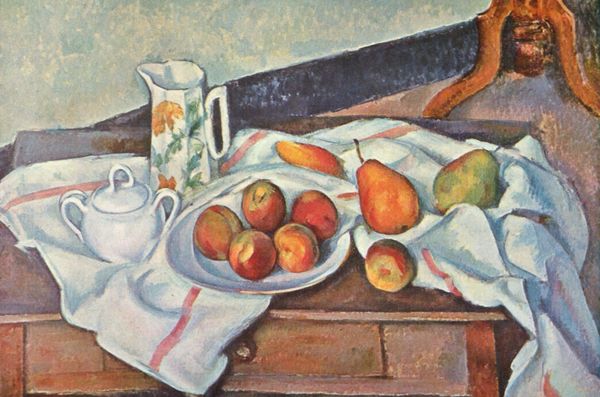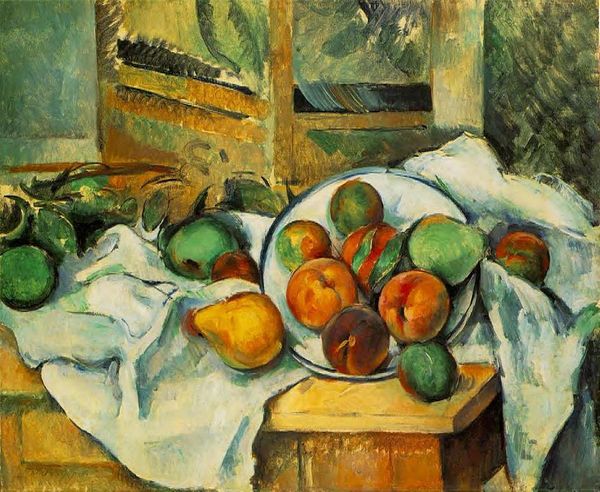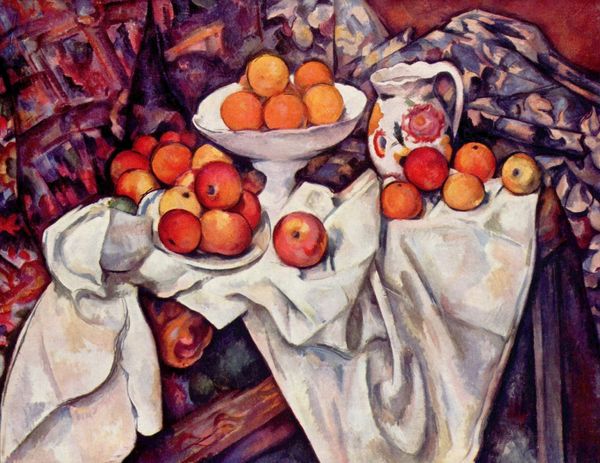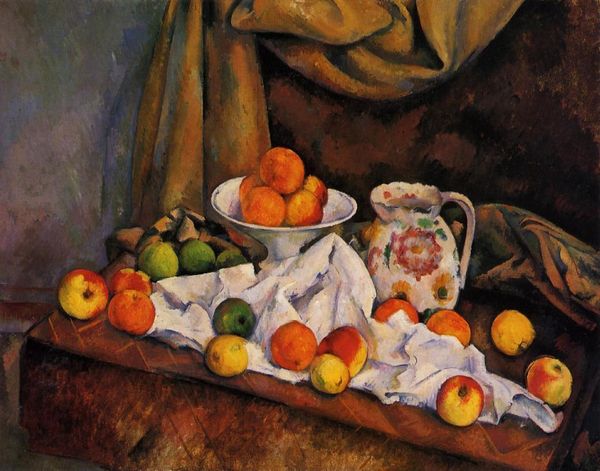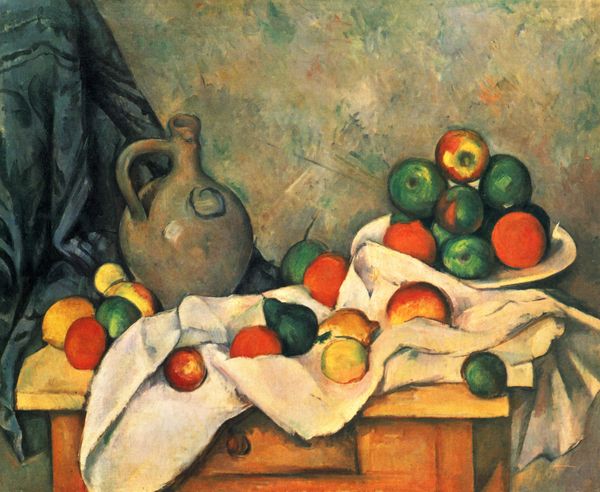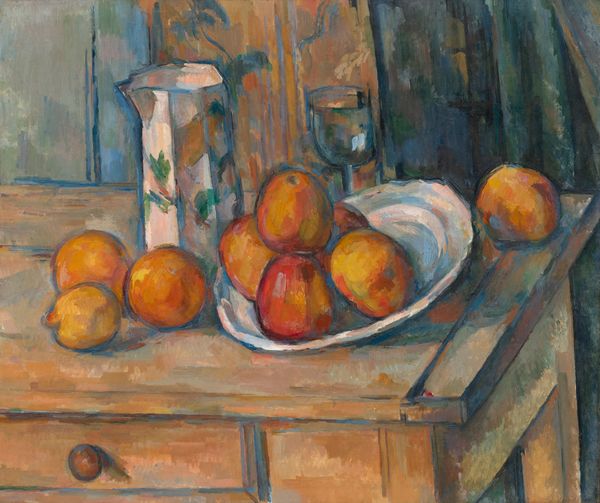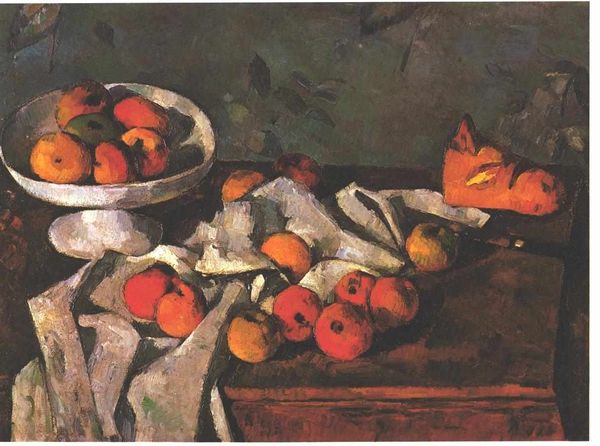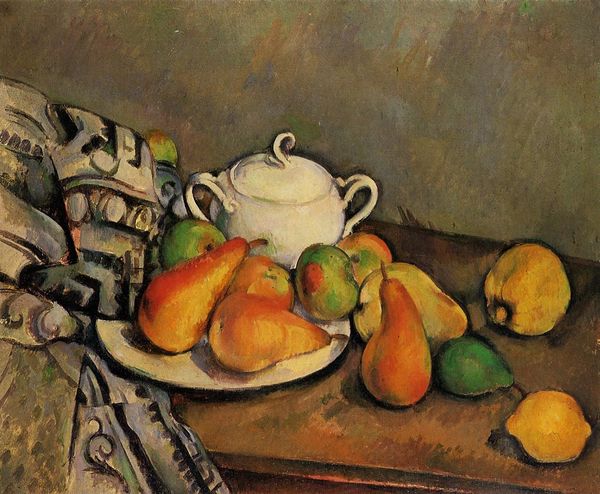
painting, oil-paint, photography, impasto
#
still-life
#
gouache
#
painting
#
oil-paint
#
photography
#
oil painting
#
impasto
#
post-impressionism
Copyright: Public domain
Editor: Here we have Paul Cézanne's "Apples and Biscuits" from around 1895. The composition is so interesting to me, a simple arrangement of fruit and what appear to be biscuits on a table, but rendered with this incredible texture. How do you interpret this work, looking at it from a historical context? Curator: It’s fascinating to consider Cézanne's still lifes in the context of late 19th-century artistic shifts. He painted this at a time of significant social and industrial change. Remember that photography was becoming increasingly accessible, challenging the traditional role of painting as a record of reality. Editor: So, the art world had to adapt? Curator: Precisely! Artists were compelled to explore subjective experiences, to push beyond mere representation. Cézanne does that beautifully. He's not just depicting apples and biscuits, he is presenting the *act* of seeing, of perceiving volume and space. How do the off-kilter perspective and visible brushstrokes play into this? Editor: They draw attention to the painting *as* a painting. It's like he's deconstructing the act of observation itself. There are a lot of brushstrokes; did Cézanne embrace what would soon become the public appeal of post-Impressionism? Curator: In some respects, yes. Still, note the rising middle class was beginning to desire paintings that offered a sense of stability and order. Yet, Cézanne’s visual experimentation challenged those notions of the period, creating space to develop a unique pictorial construction. It reflects tension: embracing aspects of this burgeoning popularity but also being something extremely different from established salons. Editor: I see. It's almost a push and pull between tradition and avant-garde tendencies, and the market demands that arose from that environment. Thank you, this has certainly changed how I understand Cézanne’s place in history! Curator: My pleasure! Considering the artistic movements within the social history that surrounded an artwork always deepens its appeal!
Comments
No comments
Be the first to comment and join the conversation on the ultimate creative platform.


